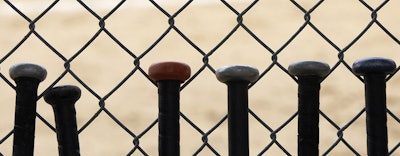
Facility owner-operators must be cognizant of the activities their facilities are designed to accommodate, as well as the risks inherent to those activities. Owner-operators further expose themselves to potential liability if one of the facilities within their purview differs from the others in terms of the protections it affords participants — particularly if that difference has led to injury in the past. These issues are illustrated in Hoffman v. Borough of Sewickley, et.al Allegheny County Civil Action No. GD-16-004447.
Permanent brain damage
On April 13, 2015, 11-year-old Zachary Hoffman and his Little League team sponsored by Avonworth Athletic Association were playing a game against a team from the Quaker Valley Recreation Association. The game was played at Chadwick Field in Sewickley Borough, a town in Pennsylvania.
Hoffman was watching from the first base dugout as a teammate fouled a pitch directly through an open area in the dugout fence. The ball struck Hoffman on the left temple area of his head, resulting in severe and permanent injuries that included a fractured skull, intense brain bleeding and permanent brain damage.
Hoffman filed a lawsuit against Sewickley Borough, Avonworth Athletic Association and Quaker Valley Recreation Association, alleging that the defendants had a "duty to maintain Chadwick Field, provide a safe environment for baseball teams playing on Chadwick Field and prevent baseball teams from playing on Chadwick Field if the environment would not be safe."
Per the plaintiff's complaint, signage at Chadwick Field indicated that the field was maintained and operated by Sewickley Borough. Notably, the first base dugout had an opening in the fencing where the backstop ends and the dugout begins. This open area was not covered by any fencing, screen and/or any other type of covering at the time of the accident, even though it is an established custom within Little League Baseball that the dugout is entirely covered by fencing, screens and/or other types of covering apparatus, leaving no open spaces for batted baseballs to enter the dugout. Further, there had been at least one previous instance of a batted baseball hitting a player in the dugout at Chadwick Field.
Hoffman alleged that but for the failure to fully protect the first base dugout from batted balls, his injury would not have occurred. The complaint alleged negligence in 11 specific areas. Most notable were (1) the failure to use a fence, screen and/or other covering apparatus to cover the open area between the backstop and dugout fences; (2) allowing baseball teams to use Chadwick Field when there was no fence, screen and/or other covering apparatus to cover the open area between the backstop and dugout fences; (3) maintaining the first base dugout too close to the backstop; and (4) allowing baseball teams within this age group to use Chadwick Field when the field dimensions are too small for the size and strength of the players.
Moreover, the complaint alleged that Hoffman's permanent injuries were a direct and proximate result of the negligence, recklessness and carelessness of the defendants.
Real property exception
Hoffman's attorney demanded a jury trial and successfully argued that the dugout was not properly protected by a fence as required by Little League Baseball safety regulations at fields across the country.
On Jan. 31, 2018, after an eight-day jury trial, Hoffman won a verdict against all three defendants, and damages in the amount of $1,721,341.13. The jury apportioned liability across all three defendants. After the verdict, Sewickley Borough filed a motion for post-trial relief and raised issues regarding improper application of the Real Property Exception to the Tort Claims Act, as well as improper application of the "no-duty" rule.
The Real Property Exception to the Tort Claims Act allows defendants to be found negligent in situations where they otherwise would have been immune. Specifically, the Tort Claims Act provides that "no local agency shall be liable for any damages on account of any injury to a person or property caused by any act of the local agency or an employee thereof or any other person" [42 Pa. C.S.A. § 8541].
Sewickley Borough qualifies as a local agency under the Tort Claims Act, and would have been immune from Hoffman's negligence claims but for the court's determination that the real property exception to the Tort Claims Act applies. In order to fall within the real property exception, the injured party must show that (a) the injury resulted from a dangerous condition that (b) stemmed from the care, custody or control of real property. Further, the Real Property Exception applies "only for negligence which makes government-owned property unsafe for the activities for which it is regularly used, for which it is intended to be used, or for which it may be reasonably foreseen to be used" [Vann v. Bd. of Educ. of School Dist. of Philadelphia, 464 A.2d 684 (Pa. Cmwlth. 1983)].
Sewickley Borough argued that Chadwick Field's fencing was not inherently dangerous, and that Hoffman would not have been harmed in the absence of his teammate's batting of the ball. The court agreed, noting that in the absence of a baseball game, Chadwick Field is "probably a perfectly safe place to read a book, have a picnic, or conduct all manner of non-baseball activities." However, the court definitively stated that Sewickley Borough failed to show that Chadwick Field was safe for youth baseball, the activity for which it is regularly used, for which it is intended to be used, or for which it may be reasonably foreseen to be used.
Specifically, the court found that batted balls are a known hazard to baseball players — particularly those in the dugout, who would expect to be protected. Relying on case law precedent from Pennsylvania, the court held that a baseball field must have dugouts insulated from batted balls in order to be safe for its intended, specific use. Further, the court held that the facts of this case affirmatively showed that Chadwick Field's fencing configuration left the first base dugout vulnerable to batted balls. Lastly, the court held that it is obvious that a safe dugout is an "essential safety element" of a field being used for its intended purpose of youth baseball.
As Chadwick Field was clearly in the "care, custody and control" of Sewickley, the court found as a matter of law that the real property exception applies, thus eliminating local agency immunity under the Tort Claims Act.
No-duty rule
Sewickley Borough also argued in its motion for post-trial relief that the court incorrectly determined the inapplicability of the no-duty rule.
The no-duty rule holds that a defendant "owes no duty of care to warn, protect, or insure against risks which are 'common, frequent, and expected' and 'inherent' in an activity" [Craig v. Amateur Softball Ass'n of America, 951 A.2d 372, 375 (Pa. Super. 2008)].
Sewickley Borough argued that the no-duty rule should have been applied, because "the risk of being struck with a batted ball is inherent in playing — and observing — the game of baseball." The court disagreed, noting that the risk of being struck with a ball, and the expectation that one may be at risk of being struck, varies wildly depending on the situation. In this case, the court found that Hoffman was injured inside his team's dugout, which in youth baseball is usually fully fenced in and one of the few places on or near a youth baseball field where a person might expect to be protected from batted balls.
The court noted that baseballs reaching the inside of youth dugouts is not a common, frequent or expected occurrence. Further, the court stated that Sewickley owed a duty to Hoffman, under the rules of Little League Baseball and otherwise, to provide a dugout that is safe from batted balls and other intrusions, and failed to do so. Accordingly, the court declined to apply the no-duty rule.
Prior notice of risk
This case is an important one for facility owner-operators, as it demonstrates that immunities offered in tort law are not guaranteed. Specifically, facility owner-operators must practice good risk management and follow established protocols for the activities taking place at the facilities they own or operate. Whether or not a facility is safe is based on the activities taking place there, and standards of practice must be followed to ensure that the risk of liability is lessened.
As noted, it is an established custom within Little League Baseball that the dugout is entirely covered by fencing, screens and/or other types of covering apparatus, leaving no open spaces for batted baseballs to enter the dugout. However, Sewickley Borough maintained a baseball field for use by Little League Baseball that did not conform to that protocol.
Also important in this case was the fact that there was at least one prior incident of a batted ball hitting a player inside the dugout at Chadwick Field, and that other fields maintained by Sewickley Borough did not have the gaps in fencing that were present at Chadwick Field. Clearly, Sewickley Borough had notice that the risk existed at Chadwick Field, and that the field was not as safe as others it maintained. Continuing to use the field for Little League Baseball given this knowledge was a poor decision that ultimately resulted in both the injury and subsequent liability.
This article originally appeared in the January | February 2020 issue of Athletic Business with the title "Gap in fence opens up $1.7M liability." Athletic Business is a free magazine for professionals in the athletic, fitness and recreation industry. Click here to subscribe.
































